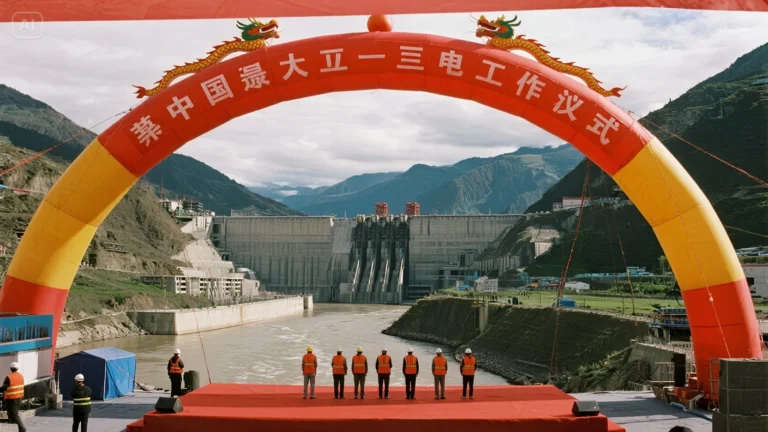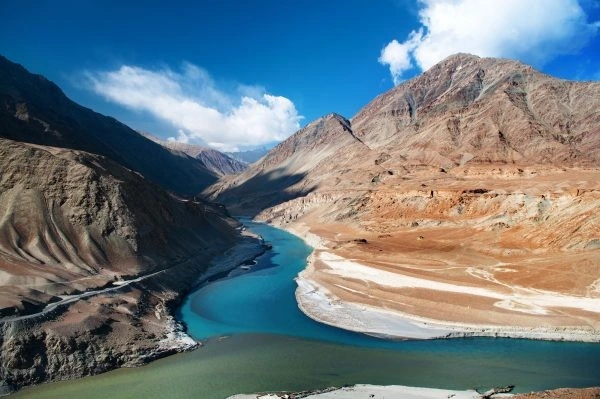US-China Joint Climate Action
 US-China Joint Climate Action
US-China Joint Climate ActionFew bilateral ties have the same worldwide importance in an era marked by environmental issues and climate instability as between the United States and China. The two biggest economies and carbon emitters in the world, their decisions on climate policy have great effects not only for their own people but also for the earth overall. Climate change remains a unique area where cooperation is both possible and necessary even if tensions between these two nations have grown over commerce, technology, and geopolitical influence. US-China Joint Climate Action Creating climate resilience by cooperative action is not only a need but also an opportunity. US–China cooperation in tackling climate issues might set a worldwide model, thereby encouraging action and invention all around.
Climate resilience is the ability of societies, ecosystems, and businesses to foresee, equip themselves for, and adjust to climate change’s effects. This includes resisting water scarcity, sea-level rise, changing agricultural zones, and extreme weather occurrences. Although both countries have different climatic vulnerabilities, China deals with fast urbanization and air pollution while the US fights hurricanes, wildfires, and infrastructure damage; their common experiences provide mutual lessons and chances for cooperation.
The 2014 joint announcement on climate change by then-President Barack Obama and President Xi Jinping was among the most hopeful signals of US–China climate interaction. That landmark helped set the foundation for the 2015 Paris Agreement and represented the first time China promised to cut its emissions. More recently, both nations signed a joint declaration at COP26 in Glasgow, promising to further climate efforts during the 2020s and thereby reiterating their resolve to collaborate in areas such methane reduction, carbon capture, and renewable energy development. These acts highlight a common awareness among political parties that climate change is a grave issue spanning national boundaries.
Technical innovation presents one exciting field for cooperation. From advanced battery research in China to carbon capture in the US, both nations lead the world in green technologies. The US and China can hasten advances in clean energy, smart grids, and climate modelling by combining knowledge and investing together in research and development. Reducing greenhouse gas emissions and developing infrastructure able to resist climate shocks depend on these technologies.
Furthermore, combined investment in strong infrastructure projects, particularly in sensitive areas, could show the value of cooperative leadership. China with its urban flood control systems and high-speed rail, the US with its disaster recovery programs and coastal resilience projects, both nations have experience in engineering major public works. By means of multilateral frameworks, sharing best practices, co-development of engineering standards, and financing adaptation initiatives in developing nations, one can improve the worldwide response to climate hazards.
Financial cooperation also has promise. Globally, the degree of climate adaptation and mitigation needed calls for trillions of dollars in investment. By means of their financial institutions and international projects like the World Bank and the Asian Infrastructure Investment Bank, the US and China can influence standards of climate-friendly investment. Setting green finance criteria and rewarding low-carbon initiatives will help the two nations guide world capital markets toward sustainability.
Another vital sector for climate resilience collaboration is food security and agriculture. Both countries are big food producers and consumers as well as susceptible to droughts, floods, and pests driven on by climate change. Cooperation on climate-smart agriculture, including precision farming, drought-resistant crops, and sustainable irrigation methods, could assist to guarantee world food supply security. Particularly in Sub-Saharan Africa and South Asia, shared research and pilot projects could produce scalable answers for other areas experiencing food-insecurity.
Crucially, public awareness and climate education should also be joint top priorities. The US and China can produce a generation of environmentally concerned leaders and citizens by creating cooperative educational campaigns and intellectual interactions. Advancement of cross-cultural awareness of climate concerns and solutions can be greatly facilitated by institutions in both nations, universities, think tanks, and NGOs.
Of course, there still are strong obstacles. Often undermining the possibility for long-term cooperation are geopolitical rivalry, mutual mistrust, and internal political dynamics. Still, climate action does not call for total political unanimity. It calls for pragmatic participation, issue-based collaboration, and a realization of shared self-interest. From economic disruption to humanitarian catastrophes, the very real hazards presented by climate change call for a firewall between geopolitics and policy.
Moreover, non-governmental and local players can serve to shield climate cooperation from national political unrest. Already, US states like California have interacted directly with Chinese provinces on pollution control and clean energy. Implementing sensible climate solutions also depends critically on cities, research institutes, and businesses of all stripes. Expanding these scattered alliances helps the US and China to keep momentum on climate cooperation even in the face of difficult national ties.
The world community has a part to help US–China climate cooperation be reinforced and facilitated. Structured conversation and cooperative projects find outlets at multilateral conferences as the G20, APEC, and United Nations Framework Convention on Climate Change (UNFCCC). Acting as brokers, the European Union and other big economies may also support responsibility, openness, and ambition in bilateral projects.
US–China cooperative action on climate resilience tests global governance in the twenty-first century. Should the two main powers be able to agree on this most urgent of issues, it would be a strong indication that international collaboration is still feasible in a society growingly divided. It would also offer much-needed leadership in an unpredictable and ecologically dangerous period.
The time for audacious, joint action is now as we get ready for a decade that will essentially define the course of climate change and its effects. Though the expenses of inaction are impossible to measure, acting together will bring benefits including safer neighbourhoods, cleaner air, more sustainable economies, Though the road to climate resilience will be long and difficult, the path has considerably more chance of success if the United States and China are walking it together.













